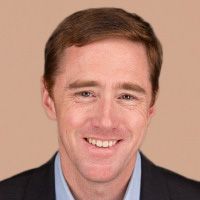Qualified Dividends vs Ordinary Dividends: How Are Dividends Taxed?
What are qualified dividends vs ordinary dividends? Here, we examine which is which, how each one is taxed and what it means for investors.


At some point in nearly every investor's life, they will be alerted to the fact that they're collecting "qualified dividends." That inevitably prompts the natural question: What are qualified dividends vs ordinary dividends?
Ultimately, the importance of this distinction has to do with how dividends are taxed. And knowing which is which can be one way to help potentially lower your tax bill.
The tax rate on qualified dividends is 15% for most taxpayers. (It's zero for single taxpayers with incomes under $48,350 as of 2024 and 20% for single taxpayers with incomes over $533,400.)
From just $107.88 $24.99 for Kiplinger Personal Finance
Become a smarter, better informed investor. Subscribe from just $107.88 $24.99, plus get up to 4 Special Issues

Sign up for Kiplinger’s Free Newsletters
Profit and prosper with the best of expert advice on investing, taxes, retirement, personal finance and more - straight to your e-mail.
Profit and prosper with the best of expert advice - straight to your e-mail.
However, "ordinary dividends" (or "nonqualified dividends") are taxed at your normal marginal tax rate.
Here are the qualified dividend tax rates for 2025 and 2024:
Status | Taxable income | Tax rate |
Single | $0 to $48,350 | 0% |
| Row 2 - Cell 0 | $48,351 to $533,400 | 15% |
| Row 3 - Cell 0 | $533,401 or more | 20% |
Married, filing jointly | $0 to $96,700 | 0% |
| Row 5 - Cell 0 | $96,701 to $600,050 | 15% |
| Row 6 - Cell 0 | $600,051 or more | 20% |
Head of household | $0 to $64,750 | 0% |
| Row 8 - Cell 0 | $64,751 to $566,700 | 15% |
| Row 9 - Cell 0 | $566,701 or more | 20% |
Married, filing separately | $0 to $48,350 | 0% |
| Row 11 - Cell 0 | $48,351 to $300,000 | 15% |
| Row 12 - Cell 0 | $300,001 or more | 20% |
Status | Taxable income | Tax rate |
Single | $0 to $47,025 | 0% |
| Row 2 - Cell 0 | $47,026 to $518,900 | 15% |
| Row 3 - Cell 0 | $518,901 or more | 20% |
Married, filing jointly | $0 to $94,054 | 0% |
| Row 5 - Cell 0 | $94,055 to $583,750 | 15% |
| Row 6 - Cell 0 | $583,751 or more | 20% |
Head of household | $0 to $63,000 | 0% |
| Row 8 - Cell 0 | $63,001 to $551,350 | 15% |
| Row 9 - Cell 0 | $551,351 or more | 20% |
Married, filing separately | $0 to $47,025 | 0% |
| Row 11 - Cell 0 | $47,026 to $291,850 | 15% |
| Row 12 - Cell 0 | $291,851 or more | 20% |
But on a more fundamental level, investors may want to know what exactly is a qualified dividend, and how we can tell if the income coming from the dividend stocks in our portfolios is qualified?
Investors may also be interested in knowing which investments pay out non-qualified dividends.
Let's start by examining how qualified dividends were created in the first place. Then we'll look at how that impacts the rules governing qualified and ordinary dividends today.

Charles Lewis Sizemore, CFA, is the Chief Investment Officer of Sizemore Capital Management LLC, a registered investment advisor based in Dallas, Texas, where he specializes in dividend-focused portfolios and in building alternative allocations with minimal correlation to the stock market. Charles has been a regular contributor to several financial media outlets over the years, including Kiplinger, Forbes and MarketWatch.
What is a qualified dividend?
The concept of qualified dividends began with the 2003 tax cuts signed into law by then-President George W. Bush. Previously, all dividends were taxed at the taxpayer's normal marginal rate.
The lower qualified rate was designed to fix one of the great unintended consequences of the U.S. tax code.
By taxing dividends at a higher rate, the IRS was incentivizing companies not to pay them. Instead, the IRS was encouraging businesses to do stock buybacks (which were untaxed at the time) or simply hoard the cash.
By creating a lower qualified dividend tax rate that was equal to the long-term capital gains tax rate, the tax code instead incentivized companies to reward their long-term shareholders with higher dividends. It also made it more attractive for investors to hold their stocks for longer.
In theory, this would create a better kind of company and a better kind of investor.
It's debatable as to whether the lower rate had the desired effect; in the two decades that have passed, companies (particularly tech stocks) continue to hoard a lot of cash, and buybacks were credited with being one of the biggest drivers of the 2009-2020 bull market.
But it's certainly true that dividends became more of a focus for both investors and the companies paying them following the 2003 tax reforms.
Even tech darlings such as Microsoft (MSFT) and Broadcom (AVGO) regularly pay dividends.
How do I know if my dividends are qualified?
To be a qualified dividend, the payout must be made by a U.S. company or a foreign company that trades in the U.S. or has a tax treaty with the U.S. That requirement is simple enough to understand.
The next part gets tricky.
The 2003 tax cut was designed to reward patient, long-term shareholders. So, to qualify, you must hold the shares for more than 60 days during the 121-day period that starts 60 days before the ex-dividend date.
As a reminder, an investor must own the stock before the ex-dividend date to receive the next dividend payment.
If you're eyes are crossing, just think of it like this: If you've held the stock for a few months, you're likely getting the qualified rate. If you haven't, you're probably not, or at least not yet.
And there are certain types of stocks whose dividends are not considered qualified no matter what.
For example, real estate investment trusts (REITs) and master limited partnerships (MLPs) typically do not pay qualified dividends.
This is because REIT dividends and MLP distributions have more complicated tax rules. But in some cases, they may actually have lower effective tax rates.
Money market funds and other "bond-like" instruments generally pay ordinary dividends. So do dividends paid out in employee stock-option plans.
The good news: It's actually not your problem to figure this out if you really don't want to. Your broker will specify whether the dividends you received are qualified or not in the 1099-Div they send you at tax season.
But knowing whether you're being paid qualified dividends can help you plan properly. Perhaps you can arrange your dividend-stock portfolio such that your lower-taxed qualified dividends are paid into your taxable brokerage account and your higher-taxed ordinary dividends are paid into your IRA.
If all of this is making your head spin, we can summarize like this:
Most "normal" company stocks you've held for at least two months will have their dividends qualified. Many unorthodox stocks – such as REITs and MLPs – and stocks held for less than two months generally will not.
Related content
- Highest-Yielding Dividend Stocks in the S&P 500
- Best Dividend ETFs to Buy Now
- Dividend Investing: Pros, Cons and Rules to Follow
- Best Dividend Stocks to Buy for Dependable Dividend Growth
- The Best Monthly Dividend Stocks to Buy Right Now
- I Hear REITs Are One of the Best Ways To Get Income From Investing, Especially in Retirement. Should I Buy Them?
Profit and prosper with the best of Kiplinger's advice on investing, taxes, retirement, personal finance and much more. Delivered daily. Enter your email in the box and click Sign Me Up.

Charles Lewis Sizemore, CFA is the Chief Investment Officer of Sizemore Capital Management LLC, a registered investment advisor based in Dallas, Texas, where he specializes in dividend-focused portfolios and in building alternative allocations with minimal correlation to the stock market.
-
 Premium Rewards Cards: More Perks, Higher Fees
Premium Rewards Cards: More Perks, Higher FeesSome issuers are hiking the annual fee on their flagship luxury credit cards by hundreds of dollars. Are they still worth using?
-
 3 Trips to Escape the Winter Doldrums, Including An Epic Cruise
3 Trips to Escape the Winter Doldrums, Including An Epic CruiseThree winter vacation ideas to suit different types of travelers.
-
 The Retirement Income Trinity: Cash Flow, Longevity and Tax
The Retirement Income Trinity: Cash Flow, Longevity and TaxRetirement income planning is essential for your peace of mind — it can help you maintain your lifestyle and ease your worries that you'll run out of money.
-
 How to Master the Retirement Income Trinity: Cash Flow, Longevity Risk and Tax Efficiency
How to Master the Retirement Income Trinity: Cash Flow, Longevity Risk and Tax EfficiencyRetirement income planning is essential for your peace of mind — it can help you maintain your lifestyle and ease your worries that you'll run out of money.
-
 I'm an Insurance Expert: Sure, There's Always Tomorrow to Report Your Claim, But Procrastination Could Cost You
I'm an Insurance Expert: Sure, There's Always Tomorrow to Report Your Claim, But Procrastination Could Cost YouThe longer you wait to file an insurance claim, the bigger the problem could get — and the more leverage you're giving your insurer to deny it.
-
 Could a Cash Balance Plan Be Your Key to a Wealthy Retirement?
Could a Cash Balance Plan Be Your Key to a Wealthy Retirement?Cash balance plans have plenty of benefits for small-business owners. For starters, they can supercharge retirement savings and slash taxes. Should you opt in?
-
 Changes Are Coming for This Invesco Bond Fund
Changes Are Coming for This Invesco Bond FundThe Invesco BulletShares 2026 Corporate Bond ETF's bonds will mature in 2026. Here's what investors should do.
-
 7 Retirement Planning Trends in 2025: What They Mean for Your Wealth in 2026
7 Retirement Planning Trends in 2025: What They Mean for Your Wealth in 2026From government shutdowns to market swings, the past 12 months have been nothing if not eventful. The key trends can help you improve your own financial plan.
-
 What Defines Wealth: Soul or Silver? Good King Wenceslas' Enduring Legacy in the Snow
What Defines Wealth: Soul or Silver? Good King Wenceslas' Enduring Legacy in the SnowThe tale of Good King Wenceslas shows that true wealth is built through generosity, relationships and the courage to act kindly no matter what.
-
 An Investing Pro's 5 Moves to Help Ensure 2025's Banner Year in the Markets Continues to Work Hard for You in 2026
An Investing Pro's 5 Moves to Help Ensure 2025's Banner Year in the Markets Continues to Work Hard for You in 2026After a strong 2025 in the stock market, be strategic by rebalancing, re-investing with a clear purpose and keeping a disciplined focus on your long-term goals.
-
 The Santa Claus Rally Officially Begins: Stock Market Today
The Santa Claus Rally Officially Begins: Stock Market TodayThe Santa Claus Rally is officially on as of Wednesday's closing bell, and initial returns are positive.